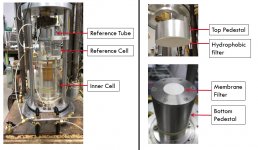Background / 背景
An earth embankment is the cheapest railway structure for a high-speed railway track. For its construction, a good quality coarse-grained soil having minimum fines is the most important requirement so that the railway embankment exhibits minimum deformation during its design life. Railway embankment is the foundation of railway lines and to construct a formation that gives trouble-free service under the most adverse conditions, it is necessary that the embankment needs to be well compacted with the coarse-grained sand soils with fine content of less than 15% to the desired degree of compaction and has high shear strength. With the rapid development in infrastructure facilities in many countries, natural granular materials or suitable best quality soils are not readily available near all construction sites and their procurement increases the project cost. Thus, leading to explore alternative geomaterials. This current study attempts to utilize the sands with non-plastic fine content (more than 15%), replacing the good quality sand. To achieve less or minimum deformation for the sands with more than 15% fine content, there needs an imperative to explore the option of utilizing this in-situ soil with higher fine content in the construction project with better compaction practices.
Many studies revealed that the increase in fine content significantly affects the mechanical behavior of coarse-grained materials. Thus, for achieving effective compaction in the field, the mechanical behavior of the soil under long-term vehicle loading needs to be studied. The mechanical behavior of the railway structure under the cyclic vehicle loading is generally referred to the axial deformation. The cyclic loading simulates the vehicle loads, which change in direction and amplitude. So, it’s quite necessary to understand the deformation behavior of the soils during cyclic loading.
Results / 検討結果
A dedicated series of suction-controlled cyclic loading testing is performed on the sands varying non–plastic fine content under unsaturated drained conditions. The deformation behavior in terms of accumulated axial strain is investigated by cyclic triaxial testing with a large number of loading cycles (50,000 load cycles) for varying degree of compaction and degree of saturation. In order to perform the testing in unsaturated drained condition, a special apparatus named “Double linkage cell triaxial apparatus” has been used. This apparatus has a ability to measure and control the suction value at each compacted unsaturated state. This kind of testing can provide important insights for obtaining clear deformation behavior by controlling this measured suction during cyclic loading in unsaturated drained tests.
Conclusions derived from the current study state that sands with medium fine content can be utilized to replace the sands with less fine content by adapting effective compaction. The precise control of degree of saturation will provide an idea for the effective compaction when using sands with higher fines content in practice. The insights given are useful for effective compaction in the field. In addition to that, current study provides an important implication for understanding the deformation characteristics of unsaturated soils as the study stated the relationship between the soil suction and accumulated axial strain. It’s also to be noted that the small changes in the suction significantly influenced the deformation behavior.

